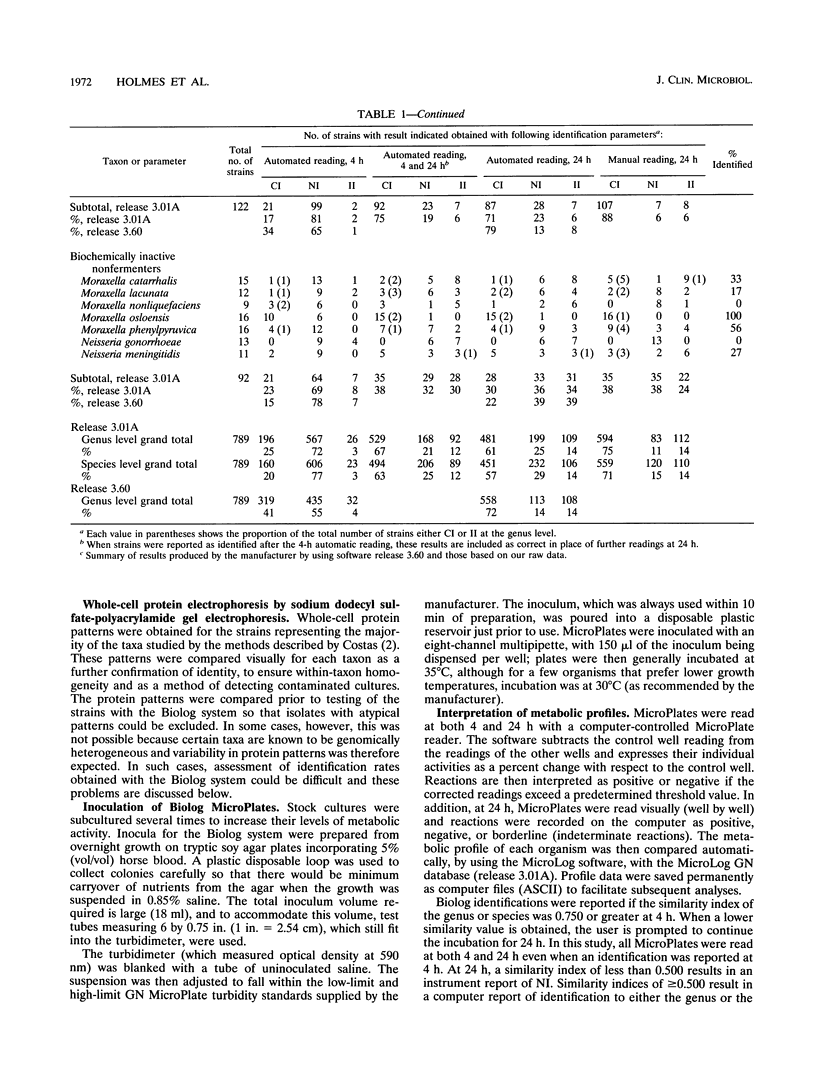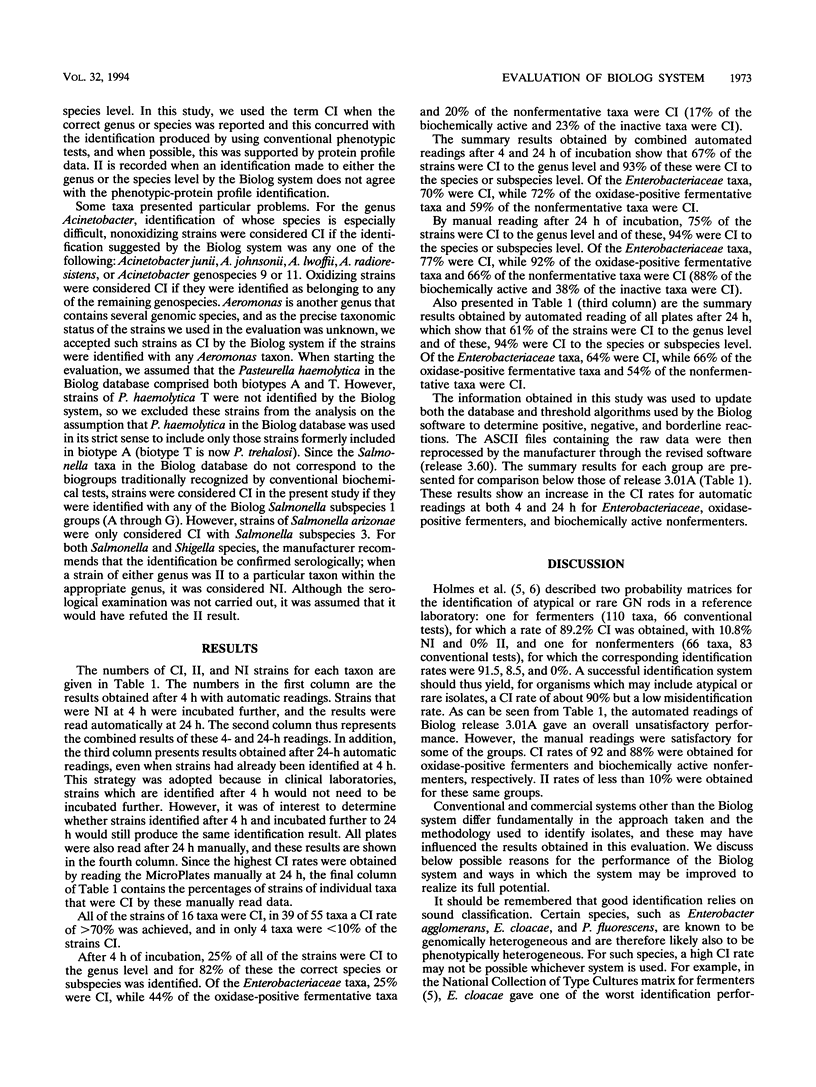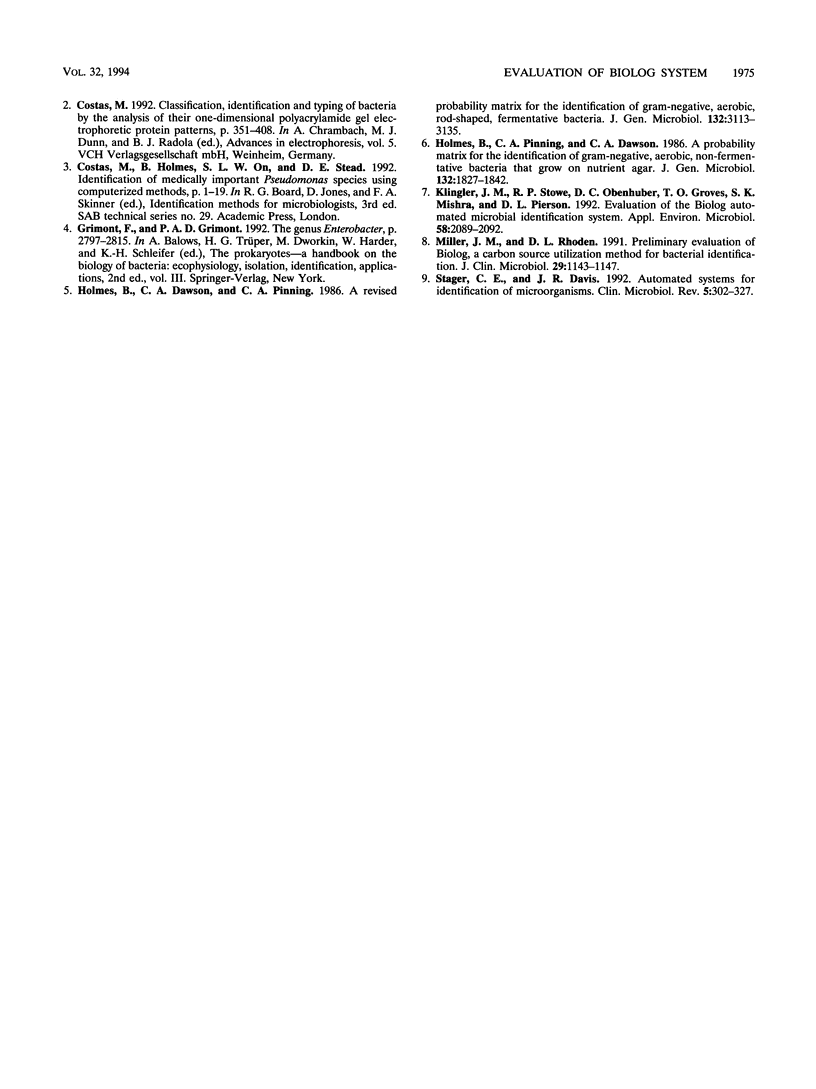Abstract
The Biolog system (Biolog, Inc., Hayward, Calif.) was evaluated for the identification of 55 gram-negative taxa (789 strains) likely to be encountered commonly in clinical laboratories. The Biolog system performed best with oxidase-positive fermenters and biochemically active nonfermenters and had the most problems with unreactive nonfermenters. It gave significantly better results when the MicroPlates were read manually rather than when they were read by the automated reader. Plates read manually gave the following performances: oxidase-positive fermenters, five taxa, 64 strains, 92% correct, 3% not identified, and 5% incorrect; biochemically active nonfermenters, eight taxa, 122 strains, 88% correct, 6% not identified, and 6% incorrect; members of the family Enterobacteriaceae, 35 taxa, 511 strains, 77% correct, 8% not identified, and 15% incorrect; unreactive nonfermenters, seven taxa, 92 strains, 38% correct, 24% not identified, and 38% incorrect. We found the system easy to use, but while for 39 of 55 of the taxa an identification rate of > 70% was achieved, problems were encountered, particularly with identification of capsulated strains of some Enterobacter and Klebsiella taxa, as well as the least biochemically active Moraxella and Neisseria strains.
Full text
PDF





Selected References
These references are in PubMed. This may not be the complete list of references from this article.
- Carnahan A. M., Joseph S. W., Janda J. M. Species identification of Aeromonas strains based on carbon substrate oxidation profiles. J Clin Microbiol. 1989 Sep;27(9):2128–2129. doi: 10.1128/jcm.27.9.2128-2129.1989. [DOI] [PMC free article] [PubMed] [Google Scholar]
- Holmes B., Dawson C. A., Pinning C. A. A revised probability matrix for the identification of gram-negative, aerobic, rod-shaped, fermentative bacteria. J Gen Microbiol. 1986 Nov;132(11):3113–3135. doi: 10.1099/00221287-132-11-3113. [DOI] [PubMed] [Google Scholar]
- Holmes B., Pinning C. A., Dawson C. A. A probability matrix for the identification of gram-negative, aerobic, non-fermentative bacteria that grow on nutrient agar. J Gen Microbiol. 1986 Jul;132(7):1827–1842. doi: 10.1099/00221287-132-7-1827. [DOI] [PubMed] [Google Scholar]
- Klingler J. M., Stowe R. P., Obenhuber D. C., Groves T. O., Mishra S. K., Pierson D. L. Evaluation of the Biolog automated microbial identification system. Appl Environ Microbiol. 1992 Jun;58(6):2089–2092. doi: 10.1128/aem.58.6.2089-2092.1992. [DOI] [PMC free article] [PubMed] [Google Scholar]
- Miller J. M., Rhoden D. L. Preliminary evaluation of Biolog, a carbon source utilization method for bacterial identification. J Clin Microbiol. 1991 Jun;29(6):1143–1147. doi: 10.1128/jcm.29.6.1143-1147.1991. [DOI] [PMC free article] [PubMed] [Google Scholar]
- Stager C. E., Davis J. R. Automated systems for identification of microorganisms. Clin Microbiol Rev. 1992 Jul;5(3):302–327. doi: 10.1128/cmr.5.3.302. [DOI] [PMC free article] [PubMed] [Google Scholar]


